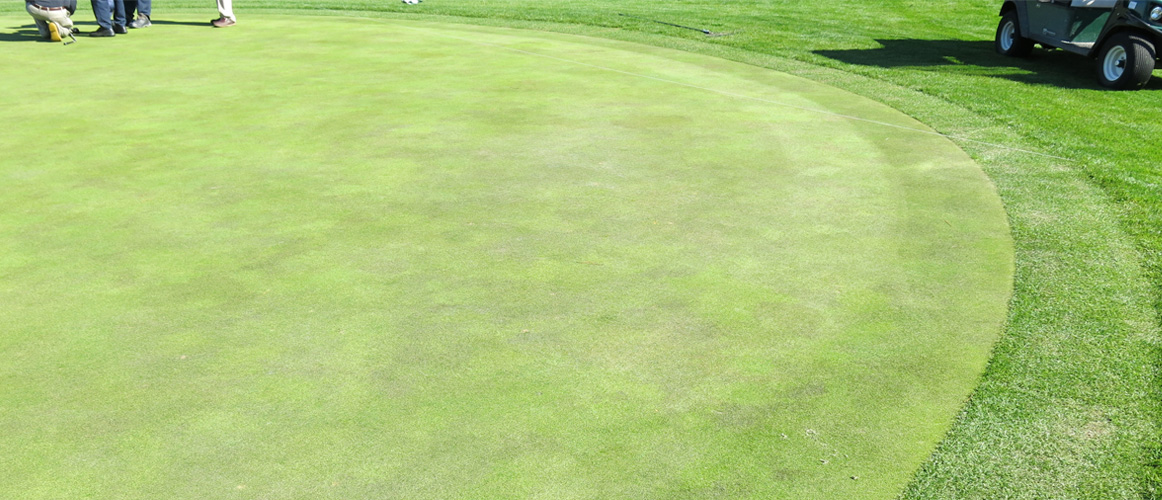Turf stress occurs for a variety of reasons, mostly due to hot temperatures and environmental extremes. In addition to direct tissue damage from high temperatures, turf that is under stress is susceptible to damage from insects and diseases because the turf has a difficult time defending itself.
Knowing the signs and symptoms of stress allows turf managers to implement corrective action and help the turf to recover before permanent damage occurs.
Here are three signs that your turf is experiencing stress and what you can do about it.
1. Turf Develops Purple Color with Silvery Cast
A change in color from green to purple along with a silvery “shine” to the grass is the first sign that turf is going into defense mode, usually due to hot temperatures. The plant is shutting down transpiration and doing everything it can to prevent water loss from the leaves.
First, place your hand on the turf. If it feels hot to the touch, the surface temperature is likely 95 to 100 degrees, and turf should be cooled down with a light mist of water, known as syringing. The idea is to cool the air around the leaves and allow the water droplets to draw heat out of the plant. This is much like the cooling action of sweat evaporating from a person’s skin.
Second, check the soil with a probe to see if it is dry. Supplemental watering may be necessary to moisten the soil. If the soil is still moist, there may be other underlying problems such as insects, disease, or high salinity.
2. Wilting and Foot-printing
This is an indication that water is no longer moving through the leaves and the turf has lost its ability to spring back from normal traffic.
At this point, avoid the tendency to dump a lot of water on the turf. Heavy watering could over-saturate the rootzone and increase soil temperatures, leading to a condition known as “wet wilt.”
The best approach is to lightly water or syringe the turf to help cool the plant, and then make sure nighttime watering schedules are adjusted to replenish soil moisture.
If there are localized dry spots, then a spot application of wetting agent may be necessary to get the soil moist.
3. Brown Spots

Brown spots are usually a sign that the turf isn’t coming back. While there may be some crowns, stolons, or rhizomes that are still alive, it will take some time for these plant parts to develop into a mature healthy plant.
Important questions to ask are:
- Is the turf loss due to drought, or are there insect or disease issues?
- Is there enough live tissue remaining to regenerate a healthy plant?
- Is the root system still alive, meaning it’s white, healthy root tissue?
- Is reseeding or resodding going to be necessary to restore a healthy turf cover?
- Are there soil issues that need to be addressed (salinity or water penetration problems)?
- Are there products or practices we can use in the future to prevent turf loss?
Turf can go into stress quickly during hot weather. Constant monitoring and knowing what to do when it occurs can prevent widespread damage while keeping the turf healthy and playable. Contact us with any questions about turf care and maintenance.




